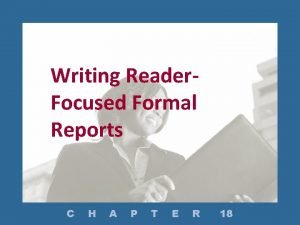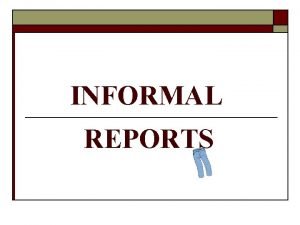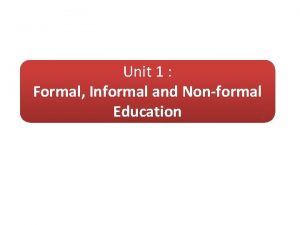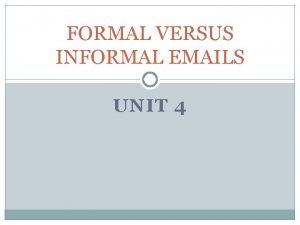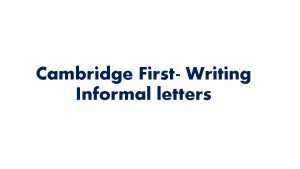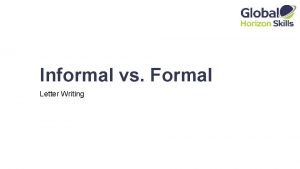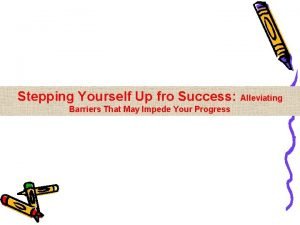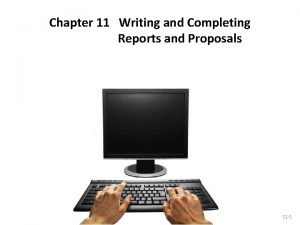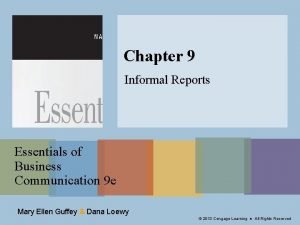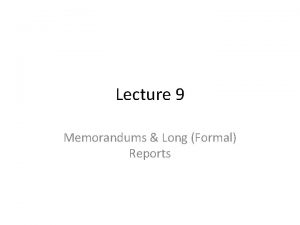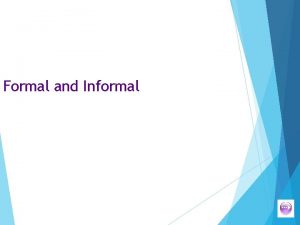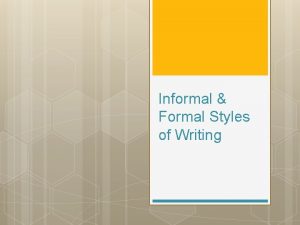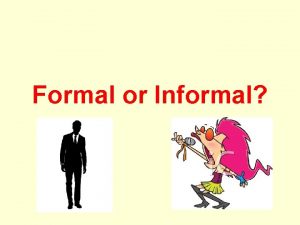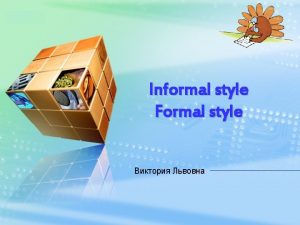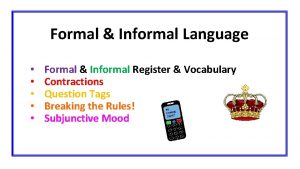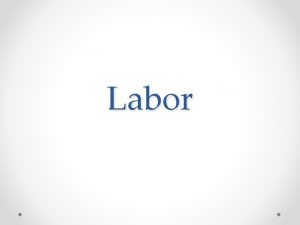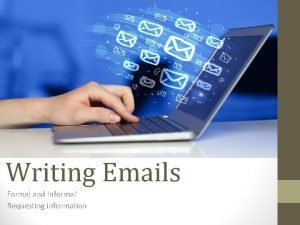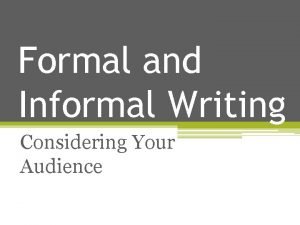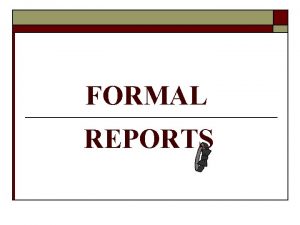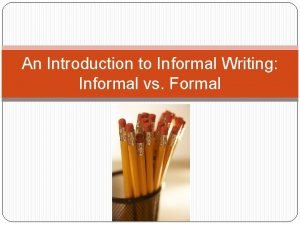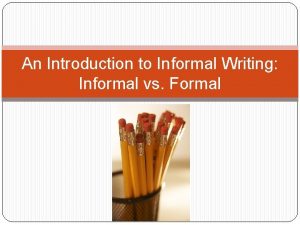WRITING REPORTS Informal and Formal Reports Types of
















- Slides: 16

WRITING REPORTS Informal and Formal Reports

Types of Informal Reports n Directives n Trip reports n Field and lab reports n Progress and status reports n Meeting Minutes

Progress Reports Include: n n An introduction which explains the objectives of the project and provides an overview of the whole project A summary of the work already accomplished n n A discussion that details the work accomplished so far and speculates on future work A conclusion that evaluates the progress of the report

Types of Formal Reports n n n Informational Report: presents results in order to help the reader understand a situation. Analytical Report: presents results and draws conclusions in order to help the reader interpret a situation. Recommendation Report: presents results, draws conclusions, and makes recommendations in order to help the reader take action.

Steps to Follow in Writing a Recommendation Report n Analyze your audience n Analyze your purpose n Identify the questions that need to be answered (the problem or opportunity) n Carry out appropriate research n Determine methodology to use

To Prepare a Recommendation Report n n n Establish criteria for responding to the problem or opportunity. Determine the options. Study each option according to the criteria. n n Draw conclusions about each option. Formulate recommendations based on the conclusions.

To Formulate Criteria Think about the following: n Questions of possibility n Questions of economic wisdom n Questions of perception

Parts of a Recommendation Report Introduction Briefly describes the subject, purpose, background, research, scope, findings, and recommendations. Methods Describe the procedures used to carry out the project. “What did you do? ” Results Describe the data that were observed or researched. “What did you see? ” Conclusions Describe the meaning of the results. “What does it mean? ” Recommendations Describe a course of action. “What should we do? ”

Parts of a Modular Report n n Abstract: primarily for the technical reader Executive Summary: primarily for the manager Body of Report: for any interested readers, including technical readers, manager, experts, and others Appendices: primarily for technicians and experts

Reader Questions in a Report n Introduction: What is the problem? Why should we consider these alternatives? n Criteria: How did you evaluate the alternatives? Are your criteria reasonable and appropriate? n Method: Are your facts reliable? n Results: What are the important features of the alternatives? n Evaluation: How do the alternatives meet or not meet the criteria? n Conclusions: What overall conclusions can be drawn from the alternatives? n Recommendations: What should we do?

Report Elements to Consider n n Clearly indentified problem or goal Adequate but not excessive data Accurate data Fully interpreted data n n n Subordination of personal bias Appropriate visuals used to explain data. Valid conclusions and recommendations.

Establish Basic Criteria n n Minimum specifications: those things that are absolutely necessary. Evaluative criteria: those things that would be nice or helpful to have, but are not essential.

Research Your Subject To create a methods section, you will need to do research that might include: n n n First-hand experience Interviews Library research Information from suppliers and sources of equipment Technical experts Internal documents

Evaluating Sources by Considering n n n n Authorship Credibility Objectivity (bias) Audience and Purpose Author’s Argument Author’s Assumptions, Evidence, and Conclusions Quality of Presentation

Effective Research Uses Adequate Depth n Surface level: popular media n Deeper level: trade and business sources n Deepest level: specialized and government sources

Three Main Elements of a Persuasive Argument The Evidence: the facts and judgments that support your claim. The Claim: the idea you are communicating. The Reasoning: the logic that you use to derive the claim from the evidence.
 Culto formal
Culto formal Examples of informal writing style
Examples of informal writing style Is a report formal or informal
Is a report formal or informal Informal reports
Informal reports Formal writing vs informal writing examples
Formal writing vs informal writing examples Unit 1 formal informal and non formal education
Unit 1 formal informal and non formal education Formal and informal emails examples
Formal and informal emails examples Cambridge letter format
Cambridge letter format What is informal letter
What is informal letter Etc in formal writing
Etc in formal writing Business proposal chapter 10
Business proposal chapter 10 Writing and completing reports and proposals
Writing and completing reports and proposals Title fly and title page
Title fly and title page Informal assessment
Informal assessment Language of technical writing
Language of technical writing Informal reports in business communication
Informal reports in business communication Interdepartmental memo
Interdepartmental memo


